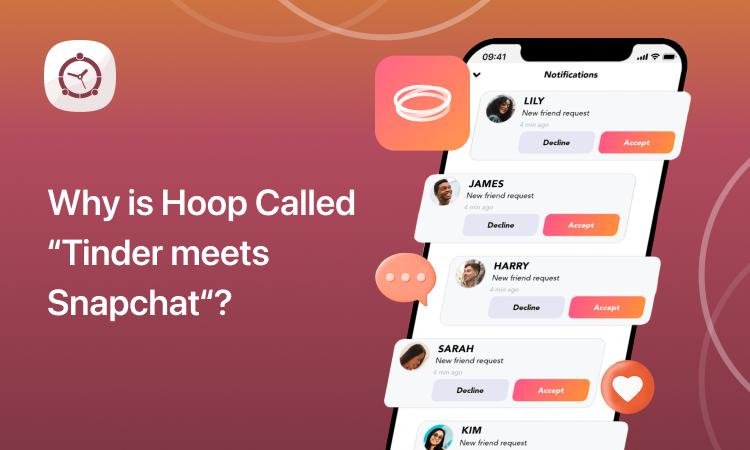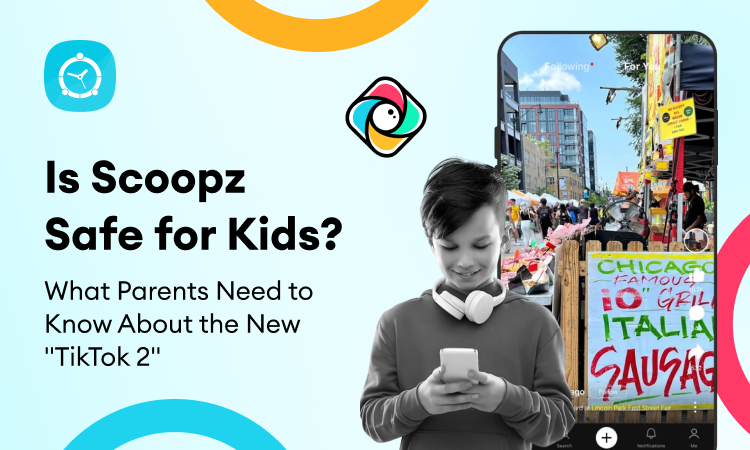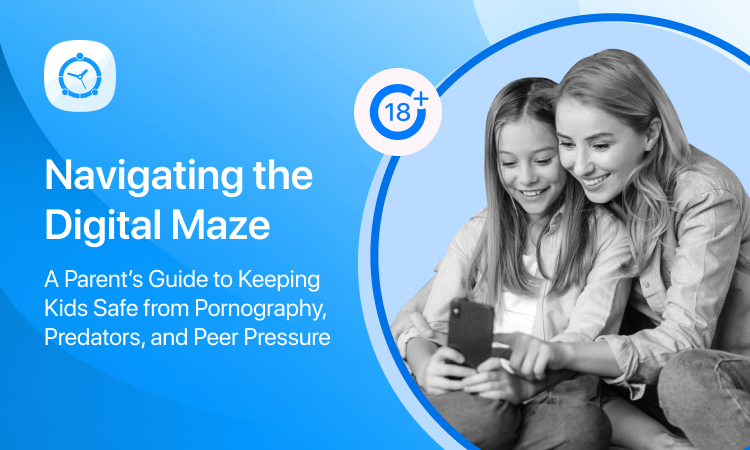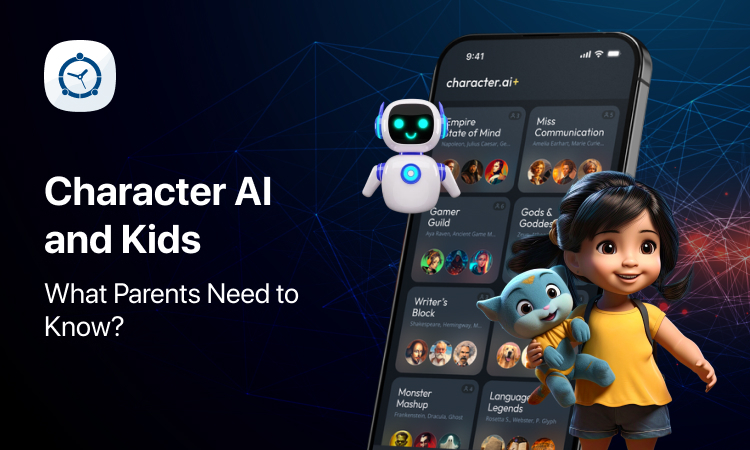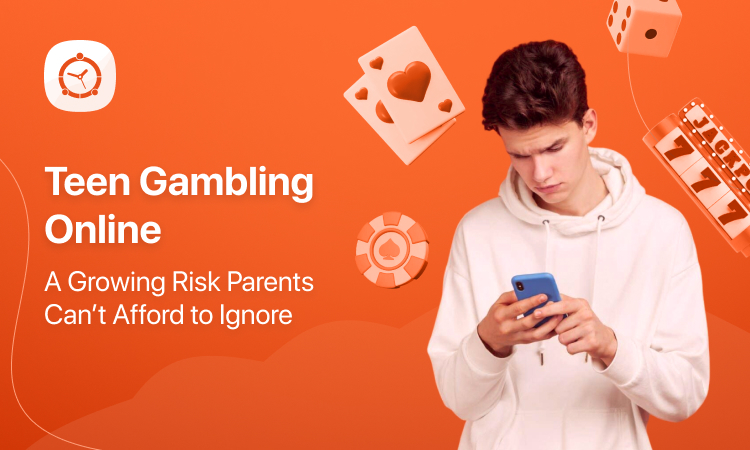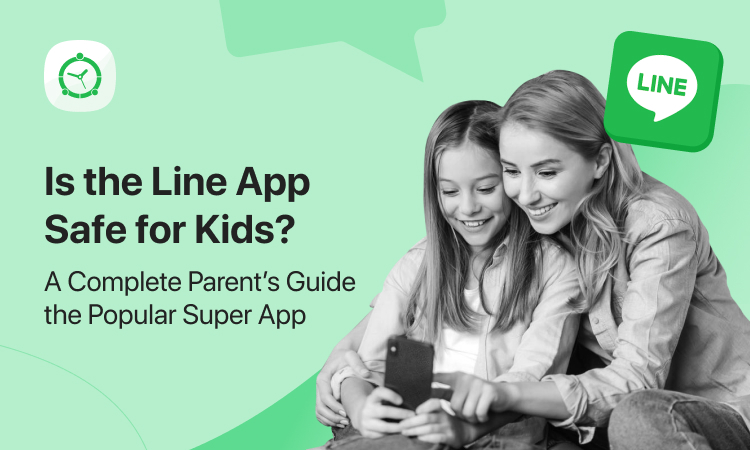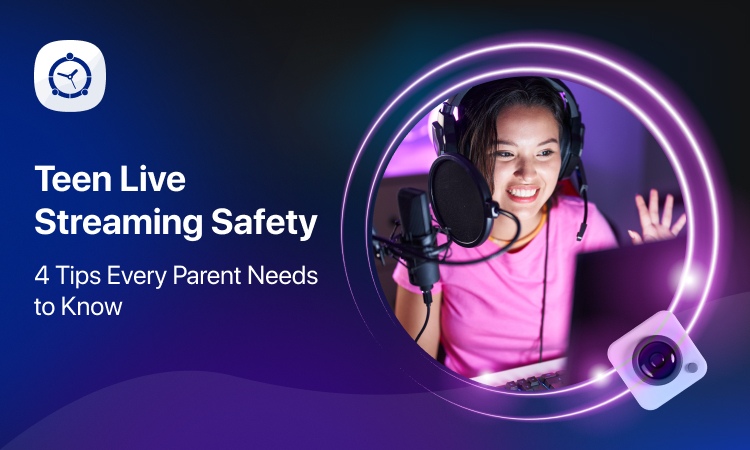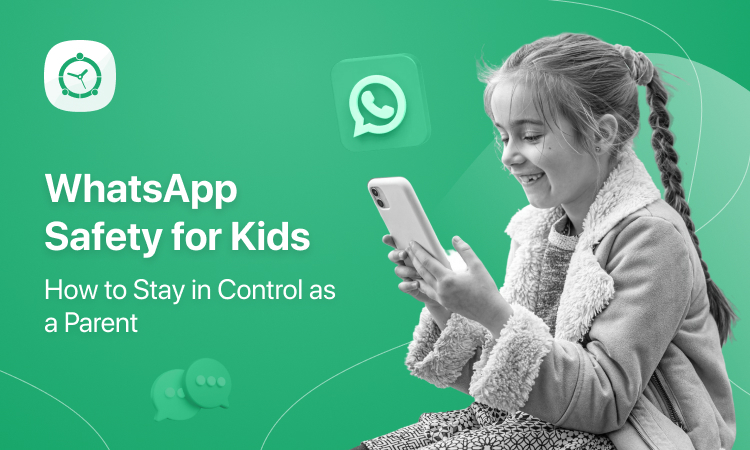The digital world is quite different right now. Social media apps are much bigger and more versatile than Instagram, TikTok, Facebook, and WhatsApp alone. If you think these are the only apps, ask your teens first. They can tell you the names of apps you have never heard of. Hoop is one of the evolving and distinctive apps ruling over teens and even younger kids for multiple reasons.
Many people consider Hoop a blend of Snapchat and Tinder. This app undoubtedly has the features and essentials of these two apps that cause resemblance. But it raises the question: Is Hoop safe for kids and teens? How did It earn the intriguing title of “Tinder meets Snapchat?” Let’s roll out the facts and get to know it more.
About Hoop App
Hoop is a social networking app designed to connect people and bring them closer. It was created in 2020 and aims to expand people’s connections and social circle. It serves as a virtual icebreaker, facilitating new friendships engagingly and interactively.
You can connect with many people through the app, but there is a catch: The other person must have a Snapchat account. It means that all Hoop users are on Snapchat as well. So, it makes the Snap connections better and stronger by letting friends be together on a whole new platform and growing their friendship stronger.
How Hoop Matches Snapchat and Tinder?
Is Hoop a dating app? No. Was it made to let teens have a dating app experience? No. So why is it termed to be inspired by Tinder? Well, Hoop integrates a swiping feature reminiscent of Tinder’s interface. Users swipe through profiles, deciding whether to connect, much like the mechanism employed by Tinder.
Based on this process, many people consider it similar to Tinder. In the interface, yes, but not in the purpose. The app was not built for dating. However, Tinder is not available for young teens, and Hoop allows users 13 or above to sign up, so it’s an access card for them. Teens use the app to connect with others and date. Even if the app is not supposed to be a dating app, the users are making a way out.
Additionally, Hoop incorporates Snapchat-like elements, including temporary photos and videos that vanish after a designated time. Plus, it lets users earn diamonds, just like Snap scores. Using these diamonds, one can send friend requests to others. A user can buy or earn these diamonds by opening the app regularly.
What Makes Hoop Safe? Does it Work?
There is so much smoke about Hoop being a compromised app for kids and teens. Well, from the content and connection perspective, it can be. Safety is a paramount concern for Hoop, and this is evident in its implementation of various measures.
- No Direct Chats—Unlike other social media apps, Hoop does not let random users chat. There is no direct chat feature, so one can only send friend requests to connect. Users can view profiles and send requests to the ones they like. Users have the option to accept or reject the friend request.
- No underage sign-ups – Hoop has a strict age limitations and restrictions policy. It does not let users younger than 13 sign up. However, anyone can select the checkbox and enter the app.
- Content screening—Hoop has built-in content screening options for adult content. The app detects any explicit content and blocks it to prevent users from having unpleasant experiences.
- Reporting and blocking profiles—Users have the power to report or block any other user who is causing them problems. Hoop safety features ensure direct reporting of bullies and empower individuals to address inappropriate behavior or content promptly.
All these features make Hoop safe, but they could be more foolproof. The app has no significant age verification procedure to ensure only age-appropriate users are on board. Reports of a user being underage are the only source that exposes these users and gets them off the app.
Potential Threats for Teens on Hoop?
While Hoop endeavors to cultivate a safe environment, there are inherent risks associated with its usage, particularly for teenage users. Parents must familiarize themselves with these potential threats. Knowing them helps to safeguard their teens’ online experiences effectively.
Exposure to Explicit Content
Despite efforts to moderate content, Hoop may still expose teens to inappropriate or explicit material. Users may share suggestive photos or engage in conversations of a sexual nature. It potentially exposes impressionable teens to content unsuitable for their age group.
Interactions with Strangers
Hoop facilitates connections with individuals based on shared interests, which also means that teens may interact with strangers. At the same time, some interactions may be harmless and genuine. However, there is always the risk of encountering individuals with bad intentions.
Cyberbullying and Harassment
The anonymity afforded by online platforms like Hoop can lead teens to become victims or even the source of cyberbullying or harassment. Teens may be subjected to hurtful comments, threats, or exclusionary behavior. Or they can even cause all this to anyone if they are not guided properly. All this will lead to emotional distress and psychological harm.
Grooming and Exploitation
Unfortunately, predators online are always looking for opportunities to exploit vulnerable teens. They can use Hoop’s features to groom teens for illicit purposes. They can manipulate the teens by posing as peers or offering false promises of affection or validation.
Privacy Concerns
Since Hoop safety is mandatory, the platform promises to collect user data only to personalize recommendations and enhance the user experience. However, this data collection raises privacy concerns, especially for teens needing more clarification on the terms of use and implications of sharing personal information online. The platform does not restrict young users from sharing their digital footprints on board, which is threatening, too.
Addictive Behavior
There is no doubt that social media platforms like Hoop can be addictive and lead to excessive screen time and unhealthy digital habits. Teens can use their screens to seek validation through likes, matches, or interactions. It will simply distract them from real-world relationships and activities. For parents, it is essential to identify the signs of social media addiction in them and take appropriate action.
Influence of Negative Role Models
On Hoop, teens may encounter influencers or peers who promote harmful behaviors, such as substance abuse, self-harm, or risky sexual practices. Exposure to these negative role models can exert a detrimental influence on impressionable teens, leading them down a path of self-destructive behavior.
Make Hoop Safe with FamilyTime
FamilyTime is a crucial ally in fortifying safety on Hoop and other digital platforms. The app offers a comprehensive suite of parental control features that help mitigate risks and foster a secure online environment for teens. Let’s look at what you can do to ensure Hoop safety for your teens online.
Decide Usage Age Limit
One of the first steps in ensuring the safety of Hoop is establishing an appropriate usage age limit. You should assess your child’s maturity level and readiness for social networking. Setting boundaries that align with their developmental stage and individual needs helps to keep them safe online. It’s better to restrict the age of using Hoop to 17 and older, as younger teens and kids have higher chances of facing harassment and threats.
Activate Parental Controls
FamilyTime’s parental control features give parents insight and oversight into their child’s Hoop activity. By monitoring interactions and content consumption, parents can identify any concerning behavior or content and intervene as needed to address potential risks.
Limit Screen Time
Excessive screen time can harm teens’ physical and mental well-being. With FamilyTime, you can set limits on screen time, encouraging teens to strike a balance between online and offline activities. This helps promote healthier digital habits.
Use App Blocker
To shield teens from potentially harmful content and interactions on Hoop, parents can utilize FamilyTime’s app blocker to restrict access to the app altogether. By selectively blocking apps that pose risks or are deemed inappropriate, you can add a layer of protection for teens.
Implement Approve App Feature
FamilyTime’s approved app feature allows parents to maintain control over their child’s app downloads. By reviewing and approving new apps before they are installed, parents can ensure that their teens only access age-appropriate and safe applications. This reduces the likelihood of exposure to harmful content or interactions.
Use FamilyPause When Needed
FamilyPause offers parents the flexibility to temporarily suspend their child’s device access. This helps in effectively managing screen time or addressing behavioral concerns. Parents can encourage their teens to take breaks from digital devices by temporarily pausing device usage. Using this feature, you can encourage teens to engage in other activities, promoting overall well-being.
Set App Usage Limit
By setting specific usage limits for Hoop and other apps, you can encourage responsible and mindful engagement with digital platforms. These limits serve as gentle reminders for teens to monitor their usage and prioritize offline activities, fostering healthier digital habits in the long run.
FamilyTime’s Verdict on Hoop!
While Hoop may be likened to “Tinder meets Snapchat” for its interface and functionalities, its suitability and safety for teens hinge on responsible usage and parental involvement. FamilyTime’s suite of parental control features equips parents with the tools to mitigate risks and cultivate a secure online environment for their teens. Through collaborative efforts, parents and platforms alike can work towards fostering a positive and safe digital experience for all users.
Hoop’s fusion of Tinder’s swiping dynamics with Snapchat’s ephemeral content contributes to its allure. Still, its true value lies in its potential to foster genuine connections and meaningful interactions. As users navigate the digital landscape, they must remain vigilant and proactive in addressing safety concerns, ensuring that platforms like Hoop catalyze positive experiences and growth.

